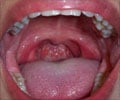About
Rheumatic fever is an inflammatory disease that may develop after an infection (strep throat or scarlet fever) with group A Streptococcus bacteria. The disease can affect the heart, joints, skin and brain.
Children in the age group of 5 to 15 years are easy prey to this disease. The disease develops usually within 1 to 5 weeks after throat infection.
The symptoms of rheumatic fever result from inflammation in the heart, joints, skin or central nervous system; and may include abdominal pain, fever, joint pain, skin nodules and rash.
The diagnosis of rheumatic fever is based on physical examination (auscultation of the heart;and skin and joint examination) and laboratory tests (ASO test, hemogram, ESRand ECG).
Treatment with antibiotics and anti-inflammatory medications helps reduce tissue damage from inflammation, lessen pain and other symptoms, and prevents the recurrence of rheumatic fever.
Rheumatic fever is associated with the development of heart valve disease and other heart disorders. This illness can affect the normal lifestyle of the patient. The complication of the disease can be very grave.
The Rheumatic Fever…begins with chilly fits; succeeded by increased heat; frequent pulse; thirst; loss of appetite; and prostration of strength. The symptom peculiar to this disease is an inflammation of the joints, which often increases to great violence, with swelling, soreness to the touch, and sometimes redness of the skin…. This is a very formidable and extremely painful disease, [and] generally continues for many weeks…. The consequences of this disorder are often painfully felt for many years. - John Haygarth, 1805












